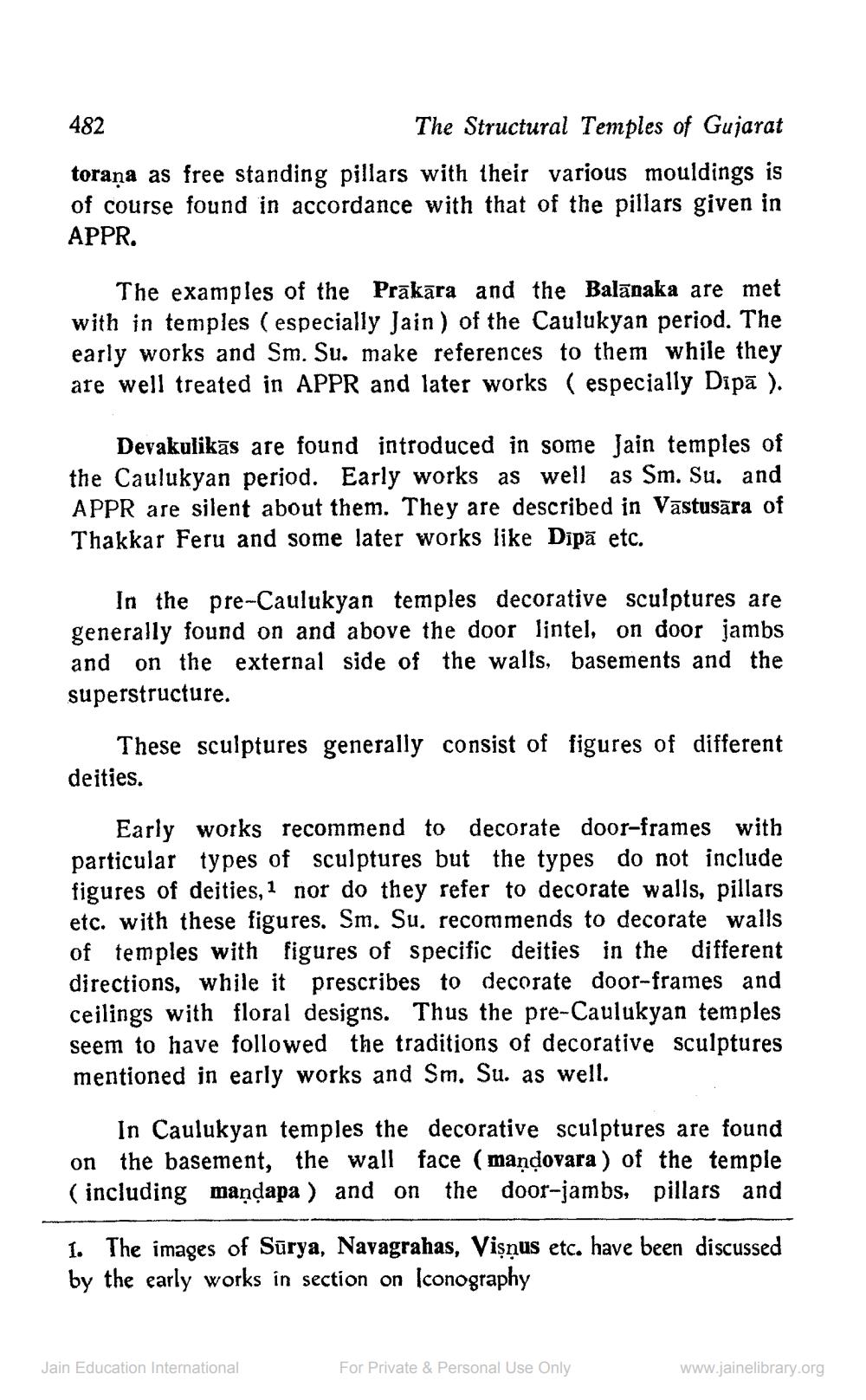________________
482
The Structural Temples of Gujarat toraņa as free standing pillars with their various mouldings is of course found in accordance with that of the pillars given in APPR.
The examples of the Prākāra and the Balānaka are met with in temples (especially Jain) of the Caulukyan period. The early works and Sm. Su. make references to them while they are well treated in APPR and later works ( especially Dipā ).
Devakulikās are found introduced in some Jain temples of the Caulukyan period. Early works as well as Sm. Su. and APPR are silent about them. They are described in Vāstusāra of Thakkar Feru and some later works like Dipā etc.
In the pre-Caulukyan temples decorative sculptures are generally found on and above the door lintel, on door jambs and on the external side of the walls, basements and the superstructure.
These sculptures generally consist of figures of different deities.
Early works recommend to decorate door-frames with particular types of sculptures but the types do not include figures of dejties, 1 nor do they refer to decorate walls, pillars etc. with these figures. Sm. Su. recommends to decorate walls of temples with figures of specific deities in the different directions, while it prescribes to decorate door-frames and ceilings with floral designs. Thus the pre-Caulukyan temples seem to have followed the traditions of decorative sculptures mentioned in early works and Sm. Su. as well.
In Caulukyan temples the decorative sculptures are found on the basement, the wall face (maņdovara) of the temple (including maņdapa ) and on the door-jambs, pillars and
1. The images of Sūrya, Navagrahas, Vişņus etc. have been discussed by the early works in section on Iconography
Jain Education International
For Private & Personal Use Only
www.jainelibrary.org




